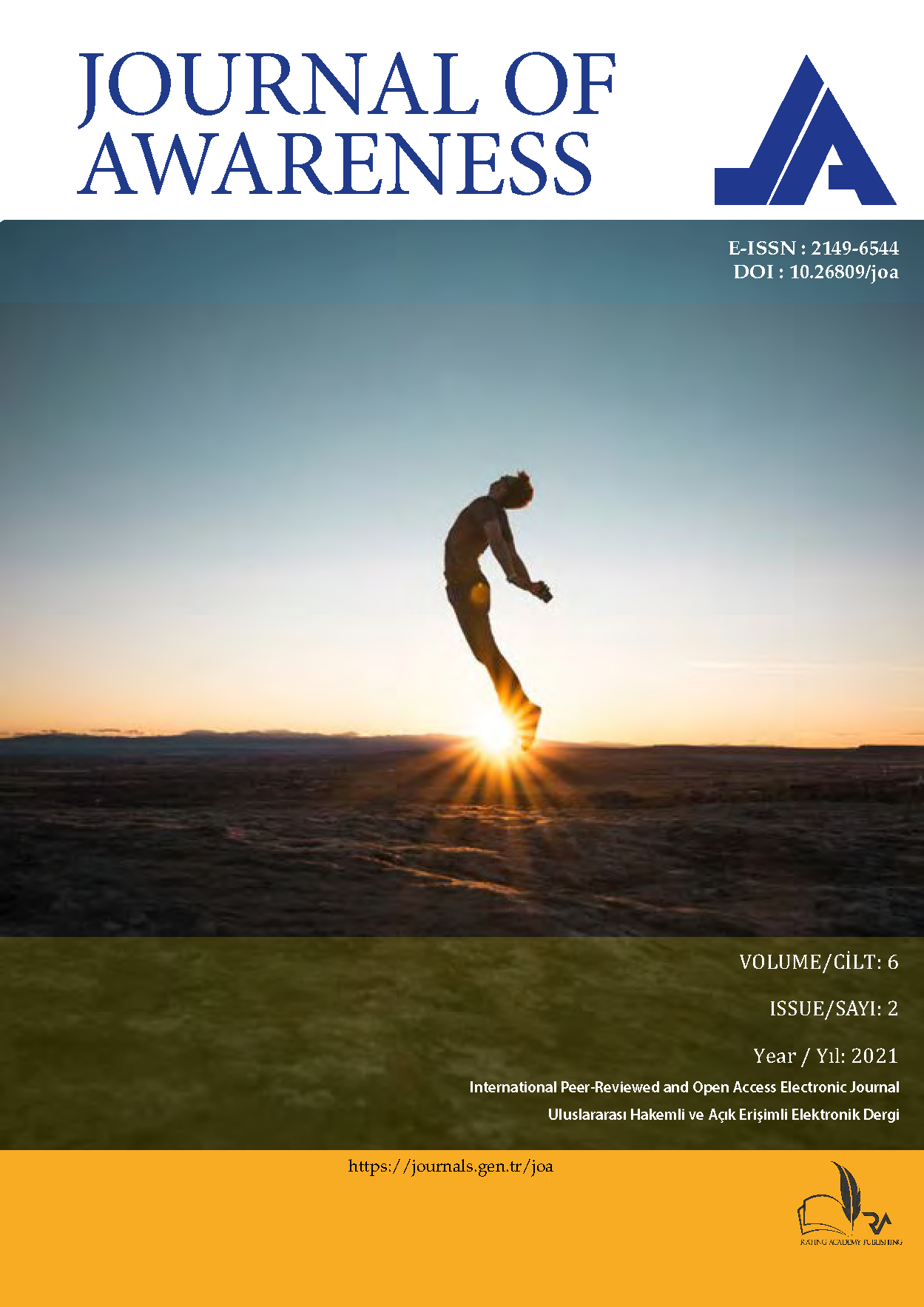THE IMPORTANCE AND ROLE OF MEDIA IN SOLVING ENVIRONMENTAL PROBLEMS IN SUSTAINABLE DEVELOPMENT
DOI:
https://doi.org/10.26809/joa.6.2.07Keywords:
Environment and Environmental Problems, Sustainable Development, Printed Media, Visual Media, Social MediaAbstract
Today; It is known that the biggest threat to sustainable development is environmental problems, however, all countries of the world, including our country, closely follow the developments in the environment and implement various studies, policies and strategies for a solution. The rapid population growth, unplanned urbanization, industrialization and economy in the world cause the depletion of natural life resources and the spread and diversification of problems such as environmental pollution from the local to the global. Today, it is observed that the media brings up issues related to environmental problems. While the media has focused on Global Warming and Renewable Energy Sources especially in 2007 and 2008, it is seen that recently, it has been focusing on Hydroelectric Power Plants, Thermal Power Plants, Mining and Coastal Forestry areas and Public Institutions and Civil Collective Organizations dealing with these issues. In 2020, Kanal Istanbul and Covid-19 gained weight on the agenda. In this context, the perception management of the central government through the media in the implementation of environmental policies and strategies creates differences of opinion in the society. It is observed that the media is widely used in the works of non-governmental organizations engaged in environmental activities in matters affecting the society, such as the protection of nature, the reduction of biodiversity, the destruction of forests, and the opening of the coasts. In this context, it is important to have an independent media in determining the positive / negative aspects of the policies and precautionary studies followed by the governments in the countries and in the adoption and implementation of the common policies and measures by the society. Similar to the current situation, the role of the media is that people have the right to know the measures taken against all environmental problems, how many of these measures can be implemented and the results obtained. In this study, in order to ensure sustainable development, the perspectives and management of written, visual and social media in the solution of environmental problems in our country and how it affects the individual and society will be examined and evaluated within the framework of laws and agreements.
Downloads
References
BAKAN, İ, & KEFE İ. (2012). Kurumsal Açıdan Algı ve Algı Yönetimi, http://iibfdergisi.ksu.edu.tr/tr/download/article-file/107639 (Erişim tarihi: 25.10.2020)
BARAN, S. (2018). Türk Basın Kanunlarının Genel Görünümü ve 5651 Sayılı Kanunun İnternet Gazeteciliğine Etkileri Üzerine Bir Tartışma, Erciyes İletişim Dergisi - ISSN: 1308-3198 https://dergipark.org.tr/tr/pub/erciyesiletisim/issue/38659/417538 (Erişim Tarihi: 24.10.2020)
BAYKAN, B. G. (2009). 2008’de Medyada Çevre. Bahçeşehir Üniversitesi Ekonomik ve Toplumsal Araştırmalar Merkezi, Araştırma Notu #25, 12 Şubat 2009
DEMİREL, S.D. (2019), Türkiye’de Yazılı Basında Çıkan Çevre Haberleri Üzerine Bir Değerlendirme, Turkish Studies Social Sciences, 14(2019), 93-104, DOI: 10.7827/TurrishStudies.14879 ISSN:2667-5617
ESKİER, U. (2017), Medya Nedir, Topluma Etkileri Nelerdir? 3 Nisan 2017 https://www.makaleler.com/medya-nedir Erişim Tarihi: 23.10.2020
GEZGİN, S. (ty), Medya ve Demokrasi, http://www.konrad.org.tr/Medya%20Mercek/19gezgin.pdf Erişim Tarihi: 23.10.2020
GÖNENÇ, D. (2019). Türkiye’de Sivil Toplum ve Çevre Politikası. Mimarlık Dergisi, 56(409) ISSN 1300-4212
KELEŞ, R. (2015). 100 Soruda Çevre, Çevre Sorunları ve Çevre Politikası, Yakın Kitabevi, 2.Basım, ISBN 978-605-63232-7-0
KELEŞ, R., HAMAMCI, C. & ÇOBAN, A. (2015), Çevre Politikası, İmge Kitabevi, 8. Baskı, Aralık 2015, ISBN 978-975-533-439-4
KORKMAZ, M. (2014). Sosyal Medya-Kamu Politikaları Etkileşimi: Gezi Parkı Olayları Üzerine Bir Değerlendirme, Hacettepe Üniversitesi Sosyal Bilimler Enstitüsü, Kamu Yönetimi ve Siyaset Bilimi Anabilim Dalı, Kamu Yönetimi Bilim Dalı, Yüksek Lisans Tezi, Ankara, Eylül 2014
MORA, N. (2008). Medya ve kültürel kimlik, Uluslararası İnsan Bilimleri Dergisi, 5(1)
PELENK ÖZEL, A. (2012). Çevresel Reklamlarda Yasal Düzenlemeler ve Etik Tartışmaları, Akdeniz İletişim, Akdeniz Üniversitesi İletişim Fakültesi Dergisi, 17(Temmuz), 9-34
SERT, N. Y. (2012). Çevre Hareketlerinde Medyanın Tutumu ve Alternatif Medyanın Kullanımı Örnek İnceleme: "Yalova Termik Santraline HAYIR!” Kampanyası, Medya ve Gündelik Yaşamda Çevre Gerçeği, Aya Kitap ISBN 978-9944-106-39-9.
SKA Pusulası, www.sdgcompass.org (Erişim Tarihi: 13.11.2020).
TÜRK, G.D. (2013), Demokrasinin Dördüncü Kuvveti Yeni Medya Teknolojileri. İnet-Tr’13, XVIII. Türkiye'de İnternet Konferansı, 9-11 Aralık 2013, İstanbul Üniversitesi
URL-1: https://www.trt.net.tr/kurumsal/tarihce.aspx (Erişim Tarihi 12.10.2020)
URL-2: https://birikimdergisi.com/haftalik/9226/ana-akim-medyaniz-nasil-olsun (Erişim Tarihi; 24.12.2020)
URL-3: https://www.birgun.net/haber/2019-da-one-cikan-cevre-haberleri-281766 (Erişim Tarihi: 13.12.2020)
ÖZGEN, M. (2005), Osmanlıdan Günümüze Yazılı Basın ve Siyaset İlişkisi, İstanbul Üniversitesi İletişim Fakültesi Dergisi
https://dergipark.org.tr/tr/download/article-file/212270 (Erişim Tarihi: 24.10.2020).
Downloads
Published
How to Cite
Issue
Section
License
Copyright (c) 2021 Holistence Publications

This work is licensed under a Creative Commons Attribution 4.0 International License.
When the article is accepted for publication in the Journal of Awareness, authors transfer all copyright in the article to the Rating Academy Ar-Ge Yazılım Yayıncılık Eğitim Danışmanlık ve Organizasyon Ticaret Ltd. Şti.The authors reserve all proprietary right other than copyright, such as patent rights.
Everyone who is listed as an author in this article should have made a substantial, direct, intellectual contribution to the work and should take public responsibility for it.
This paper contains works that have not previously published or not under consideration for publication in other journals.











